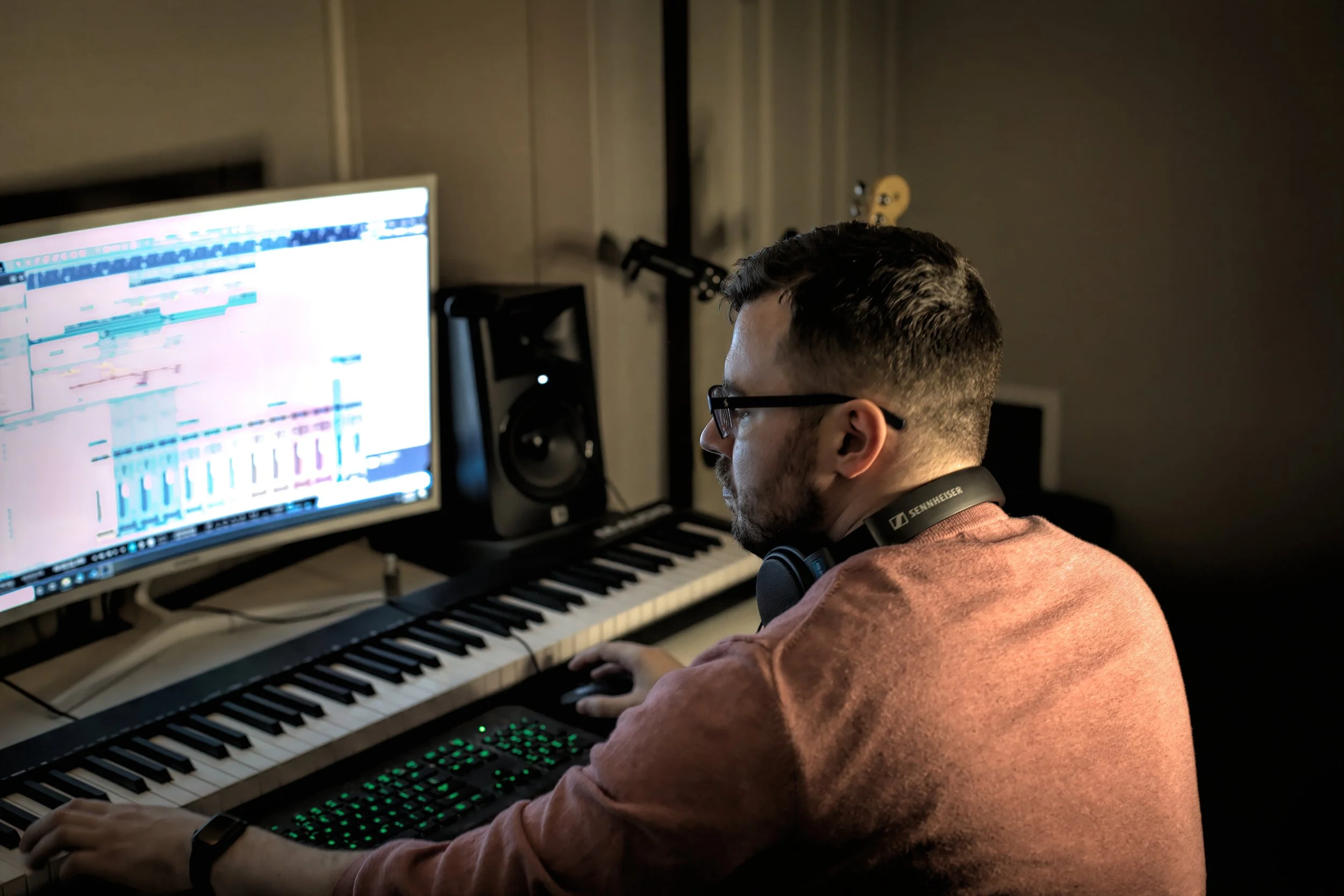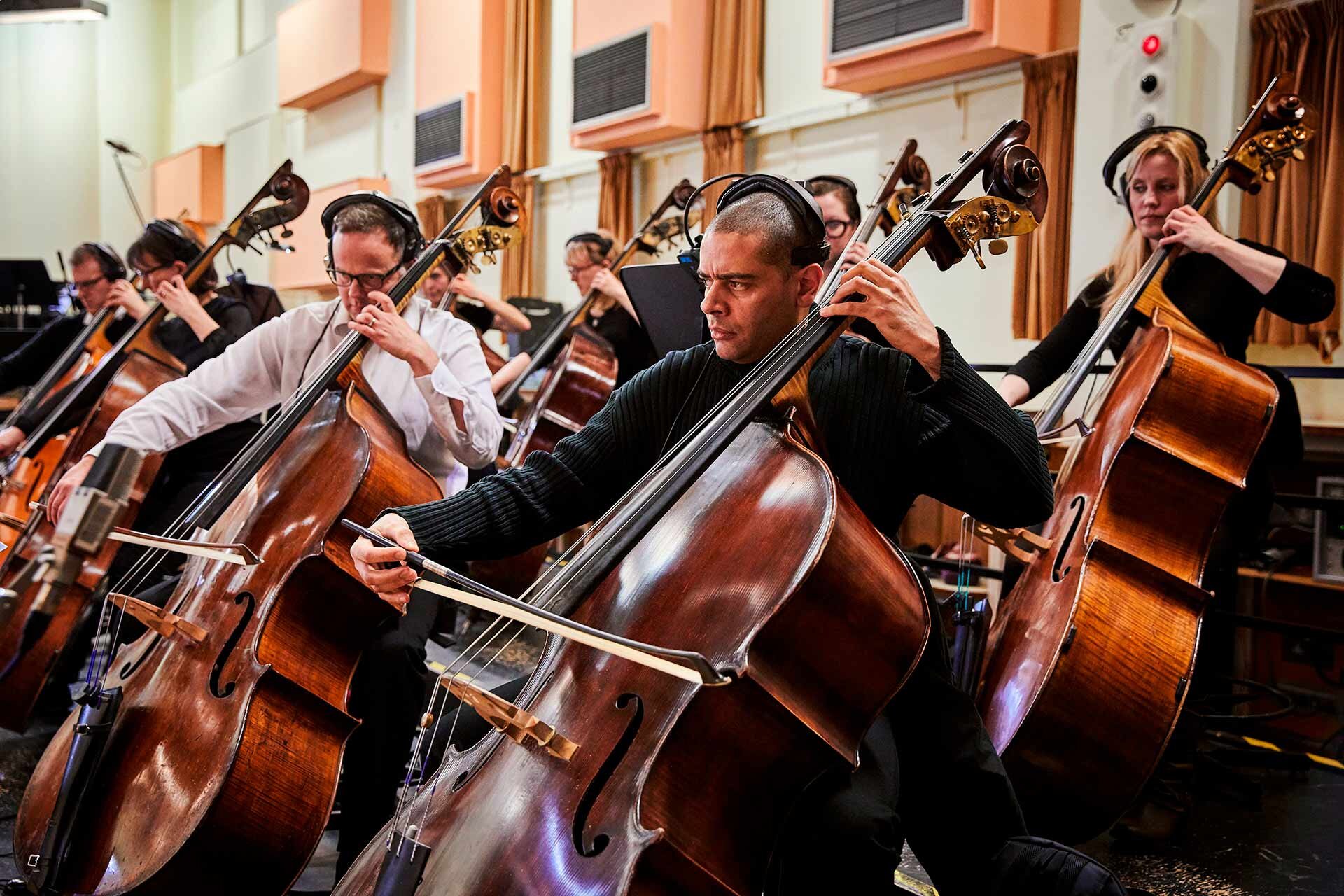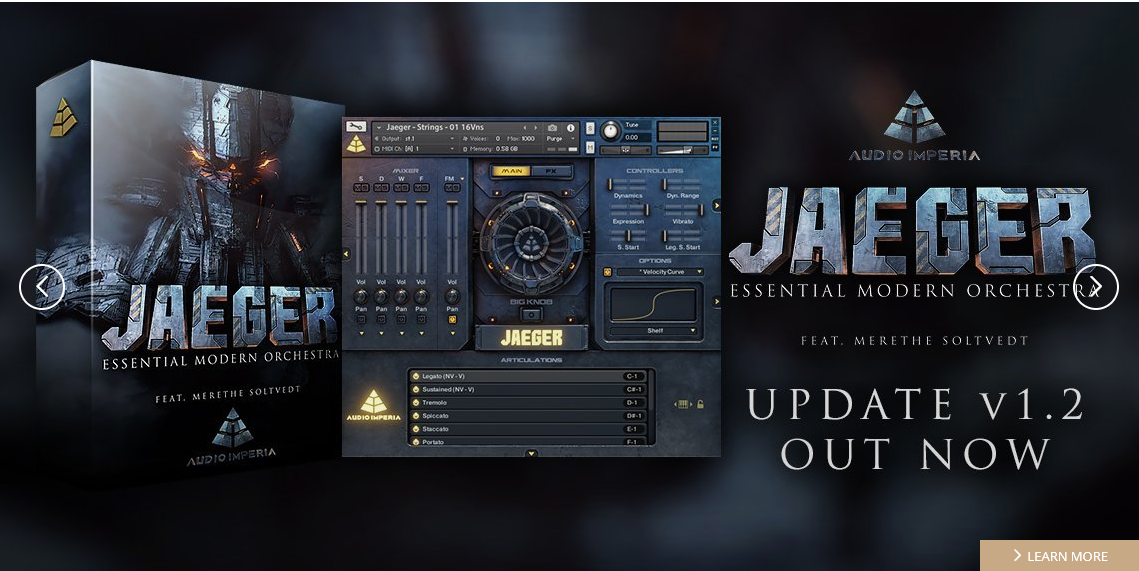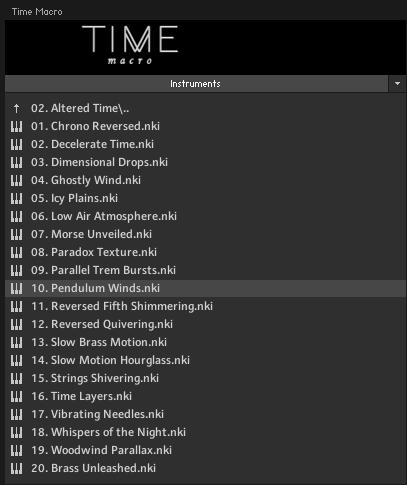Hyped to death and touted as a revolution in orchestral sampling, does the BBCSO deliver?
Update 11/26/2020: Spitfire has announced a 35gb update to this library, adding muted brass among other things, and hopefully optimizing the plug-in further. I will certainly re-evaluate the entire library and plug-in performance after I install said updates.
I’ve also noticed a select few people have had a very defensive and extreme reaction to my thoughts about this library, some going so far as to personally attack me and insinuate I am making stuff up just to bash the product. This couldn’t be further from the truth, as I do NOT hate the product and really tried to be balanced and fair in this review. There’s some amazing content, but there’s also some mediocre or flat out bad content. The biggest thing I want people to take away from this review, is the fact there are better options, but you’ll end up spending more (which is also why I specifically state it’s a GREAT VALUE). Remember: Spitfire promised a game changer, something that will benefit every composer on the planet, and delivers a sound and ease of use better than anything you’ve tried before. If I simply ignore these promises and don’t judge it on its merits compared with the other libraries on the market, that, to me, is not an honest evaluation. To clarify some points: the libraries I prefer for brass are Junkie XL Brass, Cinematic Studio Brass, and 8dio’s Century Brass, while the libraries I prefer for woodwinds are Berlin Woodwinds, Spitfire Symphonic Woodwinds, and VSL Synchron-ized Woodwinds and the ensembles from VSL SE Vol 2. In my extensive test and real world use, these libraries mentioned sound better and simply out perform their correlating sections in the BBCSO.
Others have taken offense with the fact I say I’m a non-beginner, and for some reason, they jump to the conclusion that I think anyone who likes this library must be a beginner or a non-professional, which again, is completely false. I simply know if I have zero orchestral libraries and was a beginner in terms of sample library collection, I would appreciate this library a lot more. So I’d like to finally apologize to those who took offense, but also remind everyone: it’s just a product, and to conveniently overlook the good things I say about the library is, quite frankly, nothing more than “selective reading” on your part. I’m a person who has used this product extensively. I simply refuse to treat this company with kid gloves or give only praise to this library because “their hearts were in the right place”, or what have you. Thanks for reading!
Original post follows:
Ah, we all remember it (not so) fondly: Spitfire Audio tickled our curiosity with a series of vague, ambiguous and visually enticing promo teasers… making their rounds on Facebook, VI-Control, and the like. What could they have done this time? We all feverishly guessed and commented like eager school children, building up a record breaking thread in the process. “This is London Calling!” they pronounced, as well as claiming “Everything is about to change”, hereby adding bold promises on top of their usual marketing hype.
Well, that time has come and passed. We’ve learned the product in question was their BBC Symphony Orchestra, and it was staking a claim at the top of the “all-in-one” orchestra market. We have quite a few orchestras all sampled in the same hall: East West Hollywood Orchestra, Orchestral Tools Berlin Inspire, Red Room Audio’s Palette: Symphonic Sketchpad, Audio Imperia’s Nucleus, hell, even Spitfire’s own Symphonic Orchestra, and probably more I can’t think of. What makes this one any different?
For starters, it’s the simple renown of the orchestra they’ve chosen to sample, and the location which they’ve chosen to sample them at. The legendary BBC Symphony Orchestra, in their home of Maida Vale Studios in London. As Londoners themselves, I believe for Spitfire Audio, as a company, this was also a deeply personal endeavor. Something that Christian Henson and Paul Thomson may have dreamed of doing for decades, and now they were given the chance, there’s no way they could turn it down. And, frankly, can we blame them?
There was also much talk of this library sounding better simply because they were seasoned musicians who worked together for years, all recorded in the same room… which I never fully understood completely. We’ve had many orchestral sample libraries sampled in the same room…always using some of the finest musicians in the world, who are utmost professionals and can perform with anyone and everyone day in and day out. While the advantage to having a familiar group of musicians perform a piece of music together is obvious, when they are being sampled, tediously playing individual notes instead of actually performing a piece of music… to me, the advantage disappears, and that’s nothing more than marketing hype. Powerful marketing hype, to be sure, but ultimately doesn’t amount to anything for me personally. However, I watched with curiosity as many, many users bought into this. Swearing that this one sounded more realistic and better than anything else available. As you may have already guessed…I ended up buying it.
The Sound and Playability
Now, in my style of reviewing, I tend to be very critical. The more marketing and hype that surrounds the product, the easier it is to be disappointed. So I want you to keep this all in mind as I write my honest and in depth thoughts about this library.
The library, when you just sit down and start playing notes, sounds amazing, as many would expect. It sounds like a real orchestra when you play the notes. It blends together very well. However, this is simply not enough to warrant a purchase for many composers today, as we have reached a point where almost all sample libraries released today sound utterly realistic when played. The big question is, does it sound inherently more realistic than every other library I own and every other library on the market? In some aspects, yes it does. In others, it falls significantly short.
The library is massive, and contains individual sections and solo instruments for strings, brass, woodwinds, and percussion. I’ll break down my thoughts on the sound of each:
The Strings : 9/10 -The string ensembles here are top-tier stuff. They have an amazing amount of depth and space without sacrificing any of the detail. Overall, they are quite warm and truly a joy to play. The performance legato is an absolute standout feature here: this is an articulation that allows you to play short spiccatos and fast and slow legato lines (including very realistic runs and portamento) all with one patch. It works beautifully, and is a noticeable improvement from the performance legato patches in Spitfire’s Symphonic Strings and Chamber Strings libraries. In fact, the performance legato patches are a staple in my personal composing template, I really love them that much. The rest of the string articulations are all great, from short notes like spiccatos and staccatos, to tremolo, flautando, and more unique articulations as well. It’s all quite extensive and sounds fantastic, and the room really compliments the string recordings very nicely. While there are some sloppy inconsistencies here and there, like slightly choppy dynamic layers or shorts that are a bit out of sync on rare occasion, overall the strings are incredible.
The Percussion: 10/10 - This is simply the most realistic sampled percussion I’ve heard to date. There is something about the depth, the sense of 3d space, the width, the ambience… it all comes together to truly make you feel like you are sitting in the exact same room as the players as they play these instruments in front of you. I was incredibly impressed across the board here, from the insanely powerful timpani, to the beautiful tuned percussion, to the plethora of snares, cymbals, etc. Honestly, zero complaints here. It all sounds stunningly realistic and natural.
The Woodwinds: 6/10 - This is where things start to fall apart for me, mostly due to incredible inconsistencies. Some of the instruments are absolutely beautiful, most namely the flutes (solo and ensemble) and the bassoons (solo and ensemble). Some of the woodwind instruments also contain performance legato patches, which is something they’ve never done before, and with the instruments that utilize it, it’s very effective and works great. The flutes are a standout here, as they utilize the performance legato techniques flawlessly, with an absolutely beautiful and lovely, airy tone, with an amazing sense of both depth and detail. The bassoons come second to me, they sound very, very good, but I don’t like the default mix option, preferring he tree mics. There is a noticeable crossfade in some of the dynamic layers in the bassoons after transitioning from one note to the next. It’s a very small thing you have to listen for, and overall I love the sound of the bassoons here.
The rest of the woodwinds really start to fall apart for me in a few areas: noticeable lack of dynamic layers and legato transitions. This is why I mentioned this library, as a whole, is plagued by inconsistencies. It’s most noticeable in the woodwinds for me, because while the flutes are among the finest sampled instruments I’ve heard, many of the other sections sound like they were hastily thrown together and sloppily edited. The oboe, for example, sounds good, and has some great legato transitions, which is the natural slurring you hear when transitioning from one note to the next. However, when you switch to the English horn, the legato transitions are practically non-existent, with very jarring and noticeable lack of slurring when you transition between notes, as if you are simply playing a sustain patch with “fake” legato scripting as opposed to true recorded legato. Some details like this are to be expected when you have such a huge sampling project, but it simply happens too often here to tout this as the best sampled orchestra you can get. I am also not a fan of the tone of the clarinets, while there’s nothing wrong with it, again it’s simply not up to the standard set by other companies, or even the standard set by Spitfire with their Symphonic Woodwinds collection. With some of these sections, the lack of dynamic layers is truly jarring. There is barely any change as you push the mod wheel up above value 27-ish, but once you go down below 27, if nearly drops to silence. Things like that are even more frustrating when you notice some of the sections do not have this problem, though the ones that don’t have it are the exception with the woodwinds, as most of them seem to be very sloppy and half-assed, for lack of a better term. Also, the legato is just sloppy in general, often skipping notes and not being able to perform runs anywhere near as convincing as other collections, and again, easily bested by Spitfire’s Symphonic Woodwinds which is many years old now.
The Brass - 6/10 You’ve probably heard that the brass in this collection is weak, and that’s definitely not a false statement. The solo horn, in particular, sounds laughably bad to me. However, I really like the trumpets, the legato especially, and the fantastic multitongued articulations. The only thing is, the brass all tops out quite early in terms of dynamics. Again, this is the BBC Symphony Orchestra, not the Hans Zimmer Symphony Orchestra, so I don’t mind it quite so much, but it’s very noticeable. The biggest complaint I have is, again, the inconsistency, lack of solid legato transitions, and the lack of dynamic layers here. I’d put it all on par with the woodwinds. Some sound good, most sound half baked.
The Plugin Itself/Performance
Here is where my biggest complaints come with this library. I’ll be honest, I do NOT like the plugin. I have had many, many issues with it over the last year, even after numerous updates and promises of better performance. My biggest problems with it are the load times and the overall lack of stability and choppy performance compared to Kontakt, SINE Player, and the Vienna Synchron Player. It’s simply impossible to ignore, and I am just giving my honest thoughts here, but the plugin itself tends to be a nightmare for me. I had, at one time, replaced many of my favorite Kontakt libraries with the BBCSO to try to get that fabled “cohesive” sound I kept hearing about. When it worked, it sounded amazing. Did it sound better than combining my favorite Kontakt libraries? Nope. However, the most frustrating part was how much RAM the plugin would use, how long it took to load, and how frequently it caused performance issues when composing large orchestral projects (Studio One 5, Windows 10, 64gb of RAM, Intel Core i7 8700K processor, with all the latest updates). It would often completely max out my RAM usage, when the same amount of instruments could be open and loaded in Kontakt with only a little over 50 percent RAM being used. I also noticed audio pops and dropouts frequently, which would go away after changing some settings, but would always start to happen again. I couldn’t figure out some magic setting that would fix everything, it would always come back eventually. I also would have noticeably longer load times when loading a template with multiple instances of BBCSO. I remember seeing a Youtube video that Christian Henson had an entire orchestral template loaded with every instrument from BBCSO and it only used like 12 gb of RAM or something? I don’t know what he did, but it sure as hell never worked for me.
Value
This library offers an incredible value for those staring out (and those with POWERFUL systems to handle a full template). For the pro version, it’s $999 bucks for an entire orchestra with individual sections, solo instruments, and a TON of articulations. If I were a beginner, I would probably give this library at least a solid 8/10. However, I’m not. I bought it because it promised THE most realistic and “cohesive” sound on the market. Did it deliver? For the percussion, and to a lesser extent the strings, it absolutely did. However, this isn’t the BBCSO Percussion or the BBCSO Strings library. We have to take it ALL into consideration. Did it simplify my composing progress and make it easier and more fun to write? No, quite the opposite actually. It over complicated things, and the end result was never worth it. The whole “cohesive” sound can easily be achieved by combining libraries from multiple developers, proper panning and reverb, and some basic mixing knowhow. I would rather do that, and get the exact sound I hear in my head, than have to struggle with clunky plugins and trying to work with incredibly inconsistent samples across the board. Is it terrible? Hell no! However, it’s simply not worth it in my opinion, and I regret buying the pro version. I would be happy with the Core Version for the Strings and Percussion alone, however, or even better, if they sold each section separately.





































